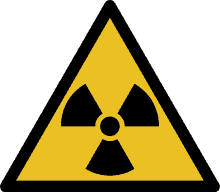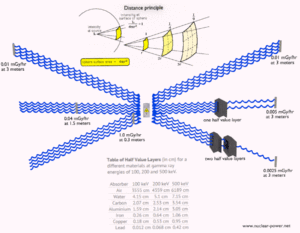
Radiation protection is the science and practice of protecting people and the environment from the harmful effects of ionizing radiation. The International Atomic Energy Agency (IAEA) defines radiation protection as:
“The protection of people from harmful effects of exposure to ionizing radiation, and the means for achieving this”
It is a serious topic not only in nuclear power plants, but also in industry or in medical centres. According to the IAEA, radiation protection can be divided into three groups:
- occupational radiation protection, which is the protection of workers in situations where their exposure is directly related to or required by their work
- medical radiation protection, which is the protection of patients exposed to radiation as part of their diagnosis or treatment
- public radiation protection, which is the protection of individual members of the public and of the population in general
According to the ICRP (Publication 103), the System of Radiological Protection is based on the following three principles:
- Justification. “Any decision that alters the radiation exposure situation should do more good than harm.”
- Optimisation of Protection. “Doses should all be kept as low as reasonably achievable, taking into account economic and societal factors.” (known as ALARA or ALARP)
- Dose Limitation. “The total dose to any individual … should not exceed the appropriate limits.”
See also: ICRP, 2007. The 2007 Recommendations of the International Commission on Radiological Protection. ICRP Publication 103. Ann. ICRP 37 (2-4).
The International Commission on Radiological Protection (ICRP) is an independent, international, non-governmental organization created by the 1928 International Congress of Radiology to advance for the public benefit the science of radiological protection. The ICRP is a sister organisation to the International Commission on Radiation Units and Measurements (ICRU), which is a standardization body and develop concepts, definitions and recommendations for the use of quantities and their units for ionizing radiation and its interaction with matter, in particular with respect to the biological effects induced by radiation.
External Dose Uptake
External exposure is radiation that comes from outside our body and interacts with us. In this case, we analyze predominantly exposure from gamma rays, since alpha and beta particles, in general, constitute no external exposure hazard because the particles generally do not pass through skin. The source of radiation can be, for example, a piece of equipment that produces the radiation like a container with a radioactive materials, or like an x-ray machine. In radiation protection there are three ways how to protect people from identified external radiation sources:
-

Principles of Radiation Protection – Time, Distance, Shielding Limiting Time. The amount of radiation exposure depends directly (linearly) on the time people spend near the source of radiation. The dose can be reduced by limiting exposure time.
- Distance. The amount of radiation exposure depends on the distance from the source of radiation. Similarly to a heat from a fire, if you are too close, the intensity of heat radiation is high and you can get burned. If you are at the right distance, you can withstand there without any problems and moreover it is comfortable. If you are too far from heat source, the insufficiency of heat can also hurt you. This analogy, in a certain sense, can be applied to radiation also from radiation sources.
- Shielding. Finally, if the source is too intensive and time or distance do not provide sufficient radiation protection, the shielding must be used. Radiation shielding usually consist of barriers of lead, concrete or water. There are many many materials, which can be used for radiation shielding, but there are many many situations in radiation protection. It highly depends on the type of radiation to be shielded, its energy and many other parametres. For example, even depleted uranium can be used as a good protection from gamma radiation, but on the other hand uranium is absolutely inappropriate shielding of neutron radiation.
Internal Dose Uptake
If the source of radiation is inside our body, we say, it is internal exposure. The intake of radioactive material can occur through various pathways such as ingestion of radioactive contamination in food or liquids. Protection from internal exposure is more complicated. Most radionuclides will give you much more radiation dose if they can somehow enter your body, than they would if they remained outside.
Public Exposure and Nuclear Power Plants
It must be noted, radiation is all around us. In, around, and above the world we live in. It is a part of our natural world that has been here since the birth of our planet. There are radioactive isotopes in our bodies, houses, air, water and in the ground – and we are exposed to radiation from outer space. This radiation is called the natural background radiation.
Exposure from nuclear power plants and its fuel cycle belongs to man-made sources of radiation. By far, the most significant source of man-made radiation exposure to the public is from medical procedures, such as diagnostic X-rays and nuclear medicine. Moreover, according to the United Nations Scientific Committee on the Effects of Atomic Radiation (UNSCEAR), public exposure to radiation resulting from the generation of electricity by nuclear power plants is just a fraction of that from coal-powered plants.
See also: SOURCES, EFFECTS AND RISKS OF IONIZING RADIATION, UNSCEAR 2016. ISBN: 978-92-1-142316-7.
We hope, this article, Radiation Protection, helps you. If so, give us a like in the sidebar. Main purpose of this website is to help the public to learn some interesting and important information about materials and their properties.